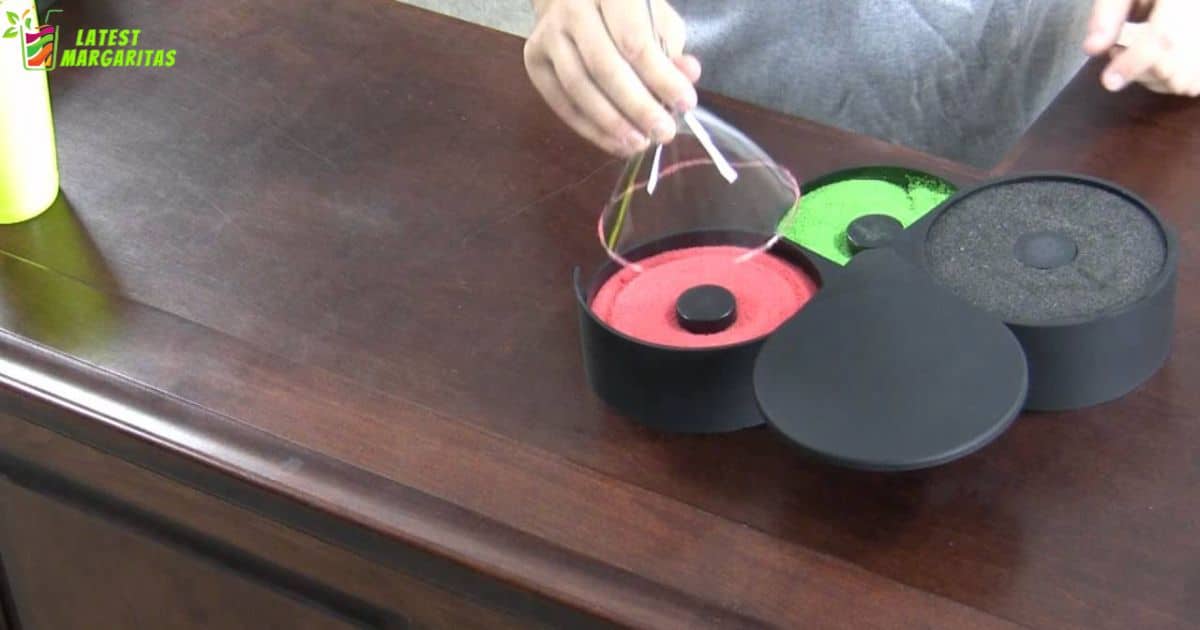Salt a margarita glass means to coat the rim of the glass with salt. This is typically done by wetting the rim with a lime wedge and then dipping it into a plate of salt. It adds a savory and tangy flavor to each sip of the margarita and enhances the overall taste of the drink. It’s a common practice to make the margarita experience more enjoyable.
To salt a margarita glass, begin by rubbing a lime wedge around the rim. Then, dip the rim into a shallow dish of salt, rotating gently for an even coating. Wondering how to make your margarita stand out? It all starts with this simple but crucial step of salting the glass!
The tradition of salting a margarita glass traces back to the 1930s in Mexico. Some believe it was to balance the drink’s tanginess, while others say it was to enhance the overall flavor. Over time, it became an iconic part of the margarita experience, adding a delightful twist to every sip.
Materials Needed for Salt A Margarita Glass
| Materials Needed | Purpose |
| Margarita glasses | Wide rim for easy salting and presentation |
| Fresh lime wedges | To moisten glass rim for salt adherence |
| Kosher or coarse salt | Preferred for better sticking to the glass rim |
| Shallow dish or plate | Holding salt for rimming the glasses |
Preparation your Margarita Glass With Salt
1. Lime Wedge Application
Take a fresh lime wedge and glide it along the outer edge of the margarita glass’s rim. This action moistens the rim, providing a natural adhesive for the salt.
2. Salt Dipping
Prepare a shallow dish or plate with a layer of salt. Gently dip the moistened rim of the glass into the salt, ensuring that the salt adheres evenly around the entire circumference.
3. Rotational Coating
Rotate the glass slowly while dipped in the salt, allowing the salt to stick uniformly to the moistened rim. This rotation ensures an even coating of salt without any gaps.
4. Excess Removal
Once the rim is salted to your preference, gently shake or tap the glass to remove any excess salt. This step prevents overwhelming the drink’s taste with an excessive amount of salt.
How do you get sugar to stick to a margarita glass?
To get sugar to stick to a margarita glass, follow these steps.
1. Moistening the Rim
Moisten the outer edge of the margarita glass. Use a lime wedge or run water along the rim to create a slightly sticky surface for the sugar to adhere to.
2. Sugar Application
Dip the moistened rim into a shallow dish containing sugar. Ensure the entire rim comes into contact with the sugar, gently pressing to allow the sugar to stick.
3. Rotational Coating
Rotate the glass slowly while it’s dipped in the sugar. This rotation helps evenly distribute the sugar around the rim, ensuring consistent coverage.
4. Excess Removal
After coating the rim, gently shake or tap the glass to remove any excess sugar. This step prevents an overly sweet taste and ensures a balanced sugar rim.
Is Salt Necessary For Rimming Glass
Salt is a traditional and popular choice for rimming a margarita glass, but it’s not an absolute necessity. Rimming the glass with salt enhances the drink’s flavor profile by adding a contrasting salty element that complements the cocktail’s tanginess.
If salt isn’t preferred or if you’re looking for alternatives, you can rim the glass with other ingredients like sugar, spices, or even crushed herbs. Some people opt for sugar to create a sweet rim, while others might use chili powder or Tajin seasoning for a spicy and tangy twist.
While salt is a classic choice and a significant component of the traditional margarita experience, you have the flexibility to experiment with various rimming options based on your taste preferences and creativity.
Variations For Rimming Glass

1. Classic Salt Rim
- Ingredients: Kosher or coarse salt
- Process: Moisten the rim with a lime wedge and dip it into a shallow dish of salt for a traditional salty rim. Rotate gently for even coating.
2. Sweet Sugar Rim
- Ingredients: Granulated sugar
- Process: Moisten the rim with a lime wedge or water, then dip it into a plate of sugar. Rotate to coat the rim with sugar for a sweet twist.
3. Spicy Tajin Rim
- Ingredients: Tajin seasoning (a mix of chili, lime, and salt)
- Process: Moisten the rim with a lime wedge and dip it into a plate of Tajin seasoning. Rotate gently for a spicy, tangy, and slightly salty rim.
What is the correct salt for margarita?
The preferred salt for rimming a margarita glass is typically coarse or kosher salt. These types of salt have larger grains compared to table salt, which allows them to adhere better to the glass rim. The texture of coarse salt provides a satisfying crunch and enhances the overall drinking experience without dissolving quickly into the cocktail.
Some bartenders and enthusiasts also use specialty salts like Himalayan pink salt or sea salt for a unique twist, offering different flavors and visual appeal. However, coarse or kosher salt remains the classic choice for rimming margarita glasses due to its texture and ability to complement the drink’s flavors without overpowering them.
Conclusion
Mastering the art of rimming a margarita glass, whether with classic coarse salt, sugar for a sweet twist, or even spicy Tajin seasoning, elevates the entire drinking experience. Each rimming variation offers a unique touch, enhancing not just the taste but also the visual appeal of the cocktail.
While coarse salt remains the traditional choice, the freedom to explore different rimming ingredients allows for personalization, catering to diverse taste preferences. Whether enjoying a zesty, tangy sip from a salted rim or indulging in a sweeter or spicier note.
The process of rimming a glass serves as the gateway to a perfectly balanced and flavorful margarita. With attention to detail and the right ingredients, one can transform an ordinary cocktail into an extraordinary sensory delight, making every sip an enjoyable journey of taste and presentation.
FAQs
How thick should the rimming be?
The thickness can vary based on preference, typically ranging from light to moderately thick.
Can I reuse leftover rimming mix?
Freshly prepared rimming mix is best for optimal taste and presentation.
Should I use a wet or dry glass for rimming?
Moistening the rim slightly helps the rimming ingredient adhere better.
What if I’m allergic to lime?
Water or simple syrup can serve as alternatives for moistening the glass rim.
Can I rim a glass with multiple ingredients?
Experimenting with various combinations can create unique rimming experiences.
Does rimming affect the drink’s taste?
Rimming adds a subtle flavor accent to each sip, enhancing the overall taste experience.





